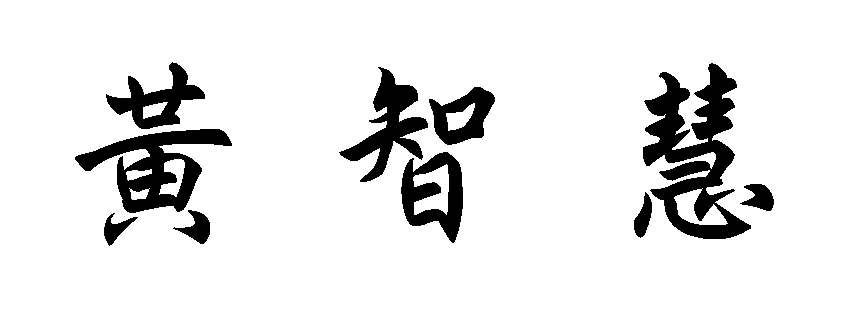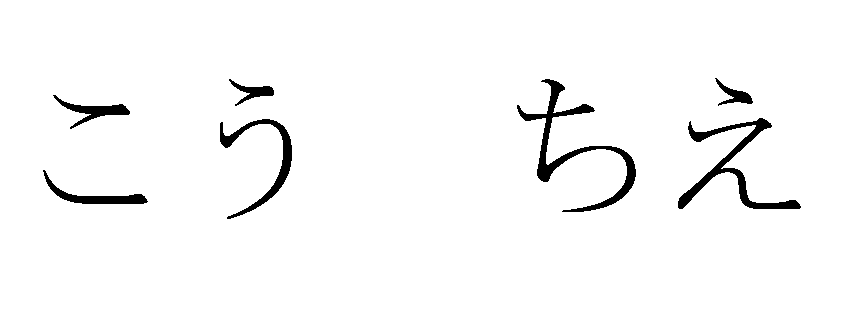
|
|
*2013年3月,榮獲第一屆「亞洲未來會議」於曼谷大會,頒發「最優秀論文獎」與「最佳發表獎」二項。 發表論文題目:「Taiwanese Attitudes toward Japan (1987-): Complex System Phenomena Caused by Ethnic Diversity and Two-Layered Colonization」,時間: 2013年3月7-9日,地點:曼谷,主辦單位:第一屆亞洲未來會議籌備會,Tamasad University,渥美國際交流財團。 |
|
|
2013年4月起擔任「小米穗原住民文化基金會」董事長 |
|
|
2010年起擔任「小林平埔原住民族文化重建協會」理事,該協會於2012年8月榮獲行政院頒發「莫拉克風災災後重建民間貢獻獎」 |
|
|
演講:2013年6月18日 主題:「災害帶給台灣原住民研究的反省與課題」 主辦單位: 國立台灣大學人類學系 地點:國立台灣大學人類學系 |
|
|
演講:2013年6月3日 主題:災後重建政策下的原住民族人權課題 主辦單位:台灣民主基金會 「原住民族人權教育營」 地點 : 義守大學 |
|
|
演講:2013年5月31日 主題:從近世漂流文獻重構 「東台灣海」域諸島族群文化圖像 主辦單位:國立台灣大學藝術史研究所、亞洲藝術史研究會 地點 : 國立台灣大學 |
|
|
演講:2013年3月26日 主題:「高砂族」がおかれた戦後の境遇:歴史和解の可能性について」 主辦單位:台北縣烏來鄉高砂義勇隊慰靈紀念協會、日本佐渡島訪台團 地點 : 烏來高砂義勇隊紀念公園 |
|
|
演講:2013年1月8日 主題:八八災後原鄉守護行動中的人類學知識運用 主辦單位:交通大學族群與文化研究所 地點 : 國立交通大學客家學院 |
|
|
演講:2013年1月8日 主題:當代原住民族抗爭事件探討:以八八水災為中心 主辦單位:政治大學通識課程 |
|
|
學術會議:2013年3月7-9日 第一屆亞洲未來會議 發表題目:「Taiwanese Attitudes toward Japan (1987-): Complex System Phenomena Caused by Ethnic Diversity and Two-Layered Colonization」 主辦單位:第一屆亞洲未來會議籌備會,Tamasad大學,渥美國際交流財團 地點:曼谷 |
|
|
學術會議:2012年12月3日 「中國、日本、與印尼災後社會重建」工作坊 發表題目:「八八災後重建政策下的原鄉守護行動」 主辦單位:「中國、日本、與印尼災後社會重建」工作坊 地點:北京清華大學 |
|
|
學術會議:2012年10月6-7日 2012年會:區域研究@臺灣人類學 發表題目:從漂流文獻重新建構「東台灣海」域族群文化圖像(15~19世紀) 主辦單位:臺灣人類學與民族學學會 地點:中研院民族所
|
|
|
學術會議:2012年8月25-28日 第五屆台日原住民族研究論壇——千千岩助太郎與台灣原住民族傳統建築 發表題目:「多元文化」的溝通術:檢視莫拉克災後重建政策的死角 主辦單位:國立政治大學原住民族研究中心 地點:Day1 國立台北科技大學 Day2-4 台灣原住民族文化園區(屏東瑪家鄉) |
|
|
學術會議 : 2012年6月11日 第7回沖縄国際学術会議プログラム 發表題目 : 黒潮文化の再検討-海流による東アジア文明の移動と伝播 主辦單位 : ソウル大学比較文化研究所 地點 : ソウル大学社会科学部シンヤン学術情報館(3号) 16-1棟406号
|
|
|
演講:2012年5月9日 【後災害時期下的重建議題--八八水災三周年座談會】 主題:重建與「安家」--原住民土地權與災後住屋政策的探討 主辦單位:行政院文化建設委員會 地點:南華大學H329
|
|
|
演講:2012年4月27日 「日本李登輝學校」第十七回台灣研修團講座 主題:台湾原住民族と日本:九二一地震、八八水害、東日本大震災を通じて生まれた新たな交流の輪 主辦單位:日本李登輝友の会、台湾群策会 地點:李登輝學校
|
|
|
演講:2012年3月27日 主題:「災後重建中人類學的參與觀察與行動:以受到八八水災影響的台灣原住民族為主的探討」 主辦單位:中國社會科學院社會學研究所民族學與人類學研究所
|
|
|
論文:2012年3月 鈴木洋平・森田健嗣訳〈台湾における日本観の交錯――族群と歴史の複雑性の視角から〉, 《地域発展のための日本研究――中国、東アジアにおける人文交流を中心に》, pp.43-70,東京:法政大学国際日本学研究センター。
|
|
|
論文:2012年3月 稲村務訳〈移動と漂流史料における民族の接触と文化の類縁関係――与那国島と台湾――〉, 《東アジアの間地方交流の過去と現在――済州と沖縄・奄美を中心にして》, pp.365-392,東京:彩流社。
|
|
|
論文:2011年12月 〈解讀高砂義勇隊的「大和魂」--兼論台灣後殖民情境的複雜性〉,《台灣原住民族研究學報》, pp.139-174,花蓮縣 : 東華大學原住民民族學院台灣原住民族研究學會出版。
|
|
|
論文:2011年11月 〈八八水災原住民族文化守護:理念與實務之落差〉,國立臺灣歷史博物館編,《行走西拉雅》, pp.131-152,臺南:國立臺灣歷史博物館出版。 |
|
|
論文:2011年6月 “Ethno‐cultural connections among the Islands around Yonaguni‐jima:The network of the“East Taiwan Sea”, OGASAWARA RESEARCH(小笠原研究)37 :7-24,Tokyo: Ogasawara Research Committee of Tokyo Metropolitan University.
|
|
|
論文:2010年5月 |
|
|
論文:2010年4月 |
|
|
演講:2010年4月14日 政治大學法律系「福利服務與社會救助專題研究」演講: 主題:【「專業不夠」與「不夠專業」的中央災後重建政策】 主辦單位:政治大學法律系 |
|
|
演講:2010年3月11日 靜宜大學通識中心課程【 新聞講看嘜 】演講: 主題:「青年魯凱的莫拉克風災重建願景 」 主辦單位:靜宜大學通識中心 地點:靜宜大學
|
|
|
論文:2010年2月 〈「東台湾海」文化圏の視点から見た与那国の島際関係史〉 与那国町史編纂委員会事務局編,《与那国町史第二巻民俗編》pp.34-51,沖縄:与那国町役場。
|
|
|
論文:2010年2月 西川潤‧蕭新煌編《東アジア新時代の日本と台湾》p.p.159-193,東京:明石書店。
|
|
|
期刊論文:2010年1月 〈台灣的日本觀解析(1987-):族群與歷史交錯下的複雜系統現象〉, 《思想》14:53-97,台北:聯經出版公司。 |
|
|
學術會議:2011年6月10日 「把人類學家帶進來」:公共人類學工作坊 發表題目:「後殖民」與「戰後」的錯位與歷史糾葛:烏來鄉高砂義勇隊紀念公園拆碑與行政訴訟案始末 主辦單位:國立交通大學客家文化學院人文社會學系/族群與文化碩士班 地點:交通大學 |
|
|
學術會議:2011年2月19日 The interdisciplinary workshop on sustainable symbiosis of human and nature from the view point of "Island study" 發表題目:Ethno‐Cultural Connections among the Islands around Yonaguni‐jima 主辦單位:Tokyo Metropolitan University(ISSIS) 地點:首都大學東京 |
|
|
學術會議:2010年11月12-13日
國立台灣師範大學原住民族發展研究中心「一年過後:原住民族災後重建與永續發展」國際學術研討會 題目:「尊重多元文化特色」的八八水災重建政策? 主辦單位:台灣師範大學原住民族發展研究中心 地點:國立臺灣師範大學教育學院大樓演講廳 |
|
|
學術會議:2010年11月11-12日 Migration, Network and Colonial Legacies in Pacific Islands 題目:The Ethno-historical Network among the Islands of the“East Taiwan Sea” 主辦單位:CAPAS-MARC 地點:中央研究院亞太區域專題研究中心 |
|
|
學術會議:2010年10月23~24日 甲仙鄉文化館『再現南臺平埔族群文化學術研討會』 題目:欠缺族群思維的重建政策 主辦單位:台灣小林平埔原住民族文化重建協會主辦 地點:甲仙鄉文化館 |
|
|
論壇主持人2010年10月8-10日 「另類教育論壇:學校作為一個公共場域」 論壇題目:山海子民原鄉傳承教育的可能性 主辦單位:國家教育研究院籌備處 地點:國家教育研究院籌備處 |
|
|
學術會議2010年10月2-3日 台灣人類學與民族學學會2010年第年會 題目:人類學與歷史學者在八八水災後小林重建的角色(共同發表人:黃智慧、 段洪坤、洪淑芬、陳叔倬、林清財、潘英海、康豹、簡文敏) 主辦單位:台灣人類學與民族學學會 地點:中央研究院民族學研究所 |
|
|
學術會議2010年9月25-26日 法政大學「國際日本學の方法に基づく〈日本意識〉の再檢討」第二屆研究會 主題:日本殖民地期の人類學研究の斷絕と再評價─台灣からの眺望 主辦單位:法政大學國際日本學研究センター 地點:法政大學 |
|
|
演講:2010年1月30日 【第一屆「臺灣守護民主平台年度論壇」】: 主題:「八八災後,重建政策檢討」 主辦單位:台灣守護民主平台 地點:臺灣大學法律學院霖澤館3樓1301階梯教室 |
|
|
演講:2010年1月10日 【災難社會田野調查工作坊】: 主題:「災難人類學與民族誌」 主辦單位:國立成功大學中文系台灣文化的流變與創新研究室 地點:成功大學文學院修齊大樓七樓會議室 |
|
|
文章發表:2009年12月 《TAHR報》2009冬季號 pp.14-17,台北:台灣人權促進會。
〈看見希望–八八災後原住民自主重建組織概況〉增補版(2009/12/31) |
|
|
演講:2009年12月12日 【法律扶助基金會第五屆志工營隊】: 主題:「從88風災談災民的救援、安置與重建的相關問題」 主辦單位:法律扶助基金會 地點:新光人壽教育會館 (台北市士林區基河路250號) |
|
|
演講:2009年11月17日 【台灣心鄉土情系列研習課程】: 主題:「災後百日看原住民族的困境」 主辦單位:群策會與慈暉學苑 地點:永和市中山路一段二十六號地下一樓 |
|
|
演講:2009年10月25日 【2009年第一屆國際民族生物學會亞洲區會議:文化與生物多樣性保育中原住民的位置、神聖空間及參與式研究方法 】: 主題:「莫拉克颱風的省思」圓桌會議:「專業介入與社區重建」引言人 主辦單位: 雪霸國家公園管理處、靜宜大學、International Society of Ethnobiology 地點:靜宜大學任垣樓國際會議廳 |
|
|
學術會議:2009年10月24日 【 海的「福善」與「暴戾」國際學術研討會—亞洲人類學與民俗學的觀點】: 論文題目:「 沖繩與那國島的島際關係史:「東台灣海」文化圈的觀點」 主辦單位: 臺北縣立十三行博物館與臺灣人類學與民族學學會共同主辦 地點:臺北縣立十三行博物館 |
|
|
學術會議:2009年10月24日 【中華民國流亡台灣60年暨戰後台灣國際處境】學術研討會: 論文題目:「 中華民國在台灣的殖民統治與遷佔者性格(1945-1987)」 主辦單位:台灣教授協會 地點:台大社會科學院國際會議廳 |
|
|
演講:2009年9月25日 【88守護家園聯盟系列座談 ─災後重建願景行動工作坊系列二】: 主題:「原住民該何去何從?─面對遷村的抉擇與部落的離散,如何協助原住民安定生活與整合部落?」 地點:喜瑪拉雅研究發展基金會研討室(台北市復興北路167號9樓之1) |
|
|
期刊論文:2009年8月 〈台湾における日本観の交錯――族群と歴史の複雑性の視角から――〉 《日本民俗學》259:57-81,東京:日本民俗學會。 |
|
|
演講:2009年8月24日 【八八水災特別報告】: 主題:「原住民族在八八水災中的受災狀況與重建評估」 主辦單位:中研院民族所 地點:中研院民族所第三會議室(新大樓2319室) |
|
|
學術會議 :2009年7月2~5日 台灣人類學與民族學學會& SEAA (Society for East Asian Anthropology)聯合大會
Panel: Shifting Cultural Identities in Postcolonial Taiwan and Japan 文化認同的位移:台灣/日本之後殖民情境
Organizer: Chih-Huei Huang, Assistant Researcher, Institute of Ethnology, Academia Sinica, TAIWAN. 主持人:中央研究院民族學研究所助理研究員 黃智慧
Abstract: After the end of World War II in 1945, the Japanese Empire, which lasted for over half a century, collapsed as a result. The great impact of this collapse on the colonial formation of society, culture and lifestyle in East Asia has not been fully assessed. The issues that this panel seeks to address here involve the shifting of cultural identities arising from mass migrations in Taiwan and Japan during the postcolonial period that resulted in the restructuring and transformation of ethnic groups in these areas. Moreover, we aim to discuss from a broader perspective and various aspects of intercultural exchange that were brought about by colonialism, for example, in regard to fishing technology, dress, tourism, etc.
摘要: 隨著1945年大戰結束,歷經半世紀的大日本帝國體系也宣告崩解。這項崩解行動所帶給東亞舊殖民地區人民在生活、社會、文化方面的鉅大影響,至今尚未能完整評估。本場次所討論的課題環繞在後殖民時代裡,包含台灣與日本,人群大規模移動所導致的文化認同位移現象,以及族群結構的重整與變動,並且以較寬廣的角度探討殖民主義所帶來異文化交流的諸多面向。
發表人/個別子題: 1)Tei Taikin, Professor, Department of Social Anthropology, Tokyo Metropolitan University, JAPAN. “Different Roles in Postcolonial Japan: Manchuria-born Japanese and Japan-born Koreans” 日本首都大學東京社會人類學系教授 鄭大均 〈日本「滿洲二世」與「在日二世」在後殖民時代裡的角色差異〉
Abstract:
Approximately 6,600,000 Japanese civilians and soldiers repatriated to their homeland from various regions of the Japanese Empire after the war. Reversely 1,400,000 Koreans in Japan returned to their homeland, and 600,000 remained. Among them, I would like to take up two groups: Koreans in Japan and the returnees from Manchuria. One is paid a high attention as a victim of Japanese colonialism, whereas the other is associated with the involvement with the Japanese invasion, so people tend to avoid to mention their backgrounds. However, the cultural and economic scenes of postwar Japan would be much less exiting without their activities. You have to exclude Mihune Toshiro, Asaoka Ruriko and Yamada Yoji from movie scenes and Abe Kobo, Endo Shusaku as well as Miyao Tomiko from the literature scenes and forget Shinkansen. The passions, visions and energy they displayed in postwar Japan was enormous. Without them Japanese sense of self respect would be more fragile. Compared to this, the role of Koreans in Japan has been political and is often related to the Japanese negativity. Now the returnees are passing away and at the same time, Japanese relations with east Asian countries are getting more defined by history: Koreans and Chinese as victims of Japan’s invasions vs. Japan as the perpetrator of the sufferings of Asia. Is it just a coincidence ?
2)Kazuyuki Nishimura, Assistant Professor, Faculty of Integrated Arts and Social Sciences, Japan Women's University, JAPAN. “The Technical Culture of Harpoon-fishing for Marlin at a Fishing Port of Postcolonial East Taiwan” 日本女子大學助教授 西村一之 〈技術文化的後殖民情境:以台灣東部漁港標旗魚漁法為例〉
Abstract:
There is a vogue
in post-colonial studies linking Japan’s colonial rule with
post-war Taiwanese society. The point at issue, then, is the
impact of the new technology and knowledge that was employed in
the process of colonial development. This report raises the
question: what was the impact for the life of the Taiwanese
people of the colonial rule introducing novel technology? To
throw light on the issue we shall consider the fishery
technology developed during the colonial period and used
thereafter in a port town in eastern Taiwan.
3)Hsuta Lin, Assistant Professor, Institutes of Ethnic Relations and Culture, National Dong Hwa University, TAIWAN. “The Manipulation of Cultural Identity in Postcolonial Taiwan” 國立東華大學族群關係與文化研究所助理教授 林徐達 〈後殖民台灣的文化身分操作〉
Abstract:
The postcolonialism today furthers globalization by reshaping identity, for it connects disparate cultural influences, further “deterritorialize[s] the process of imagining communities,” and therefore represents “a complex transnational construction of imaginary landscapes.” This paper traces this development by analyzing the postcolonial phenomena of the nostalgic fever in contemporary Taiwan, thereby revealing the nature of colonialism’s impact on the hybridized cultural identity of the colonized. In 2002, Taiwan’s travel campaign, which dedicated to the Japanese tourists, was launched with the slogan “Come to Taiwan and Learn the Japanese [Tradition]” – quite an ironic choice given Taiwan’s traditional historical and cultural associations. The practice of postcolonial tourism hence becomes a confrontation of Taiwan’s colonial experiences and serves as a nostalgic imagination for the Japanese tourists for the vanishing plurality of their own past. The disturbance between Taiwan’s present cultural identification and its past historical experiences is once again represented in 2007 “Long Stay” tourist campaign for the Japanese visitors, which revealed the imagined past is no longer the place one’s memory refers to, but “a synchronic warehouse of cultural scenarios.” As a result, the important task for Taiwan’s cultural identity is not merely to deal with the tension caused by the hybridized culture, but to understand the meaning of the disguise and transfiguration of the hybridized culture. Drawing on the nostalgic imagination and the manipulation of cultural identity, this paper demonstrates how the concept of “cultural involution” was appropriated with which the cross-regional interactivities were absorbed into local cultural and economic reproduction.
4)Ming-Tsung Lee, Assistant Professor, Department of Sociology, The National Taiwan University, TAIWAN. “Sojourn Experience and Identity Formation: A Comparative Ethnographic Study of the Taiwanese-in-Tokyo and the Japanese-in-Taipei” 國立台灣大學社會學系助理教授 李明璁 〈旅居經驗與認同型構:台灣人在東京,與日本人在台北的比較民族誌研究〉
Abstract:
The status of sojourners is ambiguous, lying somewhere between short-term tourists and permanent migrants. There is a nomadic and blurred identity. They are partly like common tourists who travel ‘light’ around the surface of the foreign metropolis, and partly like ordinary emigrants who live a bit ‘heavy’ on the margins of the alien city. Through a cross-culturally comparative ethnography, this project will discuss how the sojourners exhibit a sophisticated, though perhaps unintentional, strategy, choosing their cultural orientation and self-identification, and shifting between alternative versions thereof. Accordingly, the project will reveal details of the daily life of two groups of people: Taiwanese sojourners in Tokyo and the Japanese in Taipei, exploring their cultural practice and the flowing identity arising from their ambivalent status – neither/both tourists nor/and residents. I will show the various ways in which the imaging of the ‘highly-modernized Japan’ (for the Taiwanese) and the ‘exotic Taiwan’ (for the Japanese) meet the actual sojourning experience of Tokyo and Taipei respectively, as well as how the actual encounters discourage, confirm, or strengthen the two groups of people’s sense of identification with the Other and themselves. Finally, I will discuss how such “looking-glass” experiences between Taiwanese and Japanese sojourners articulate with the complicated historical understanding and future imagination in the postcolonial era.
5)Chih-Huei Huang. Assistant Researcher, Institute of Ethnology, Academia Sinica, TAIWAN. “The Postcolonial Condition of Taiwan: Complex System under Two Layered Colonization after 1987” 中央研究院民族學研究所助理研究員 黃智慧 〈台灣的後殖民情境:雙層後殖民所構成的複雜系統現象〉Abstract: After the end of Japanese colonial rule in 1945, Taiwan’s society should have entered the historical phase of de-colonization. However, the reality was different. Native Taiwanese (ethnic Hoklo, Hakka and Taiwan aboriginals), that is, the previously colonized inhabitants began to seriously take stock of the historical legacy of Japanese colonial rule, and this reflective evaluation appeared in a significant way only after 1987. 1987 was a pivotal moment, which marked the end of the KMT’s martial law some 40 years after the end of World War II. The following year, one of the previously colonized, Lee Deng-hui became the first native Taiwanese to become President. In the years that ensued to the present, native Taiwanese attitudes toward Japan consciously incorporated another political colonizer—the KMT regime dominated by ethnic Mainlanders, and the addition of this layer produced the perception of an ambivalent and complicated postcolonial condition. Due to the different historical experiences that native Taiwanese encountered in these two kinds of alien colonial rule, which involved the relationship to both the war and colonization, as well as the drastic evolution of the modern political system of China and Japan in the last century, Taiwan’s post-colonial condition in turn began to manifest ramifications from these drastic transformations and multiethnic interactions, as the accumulated influence of these conflicts at many levels produced complex systemic entanglements.
|
|
|
學術會議: 2009年5月22日 22 May 2009 “Stories of Seven Seas: Perspectives for the Study of Maritime Links in East-Asian Rim Seven Seas,” co-organized by Center for Archeological Studies, Center for Maritime History, and Center for Asia-Pacific Area Studies (CAPAS) 論文題目:環「東台灣海」海域文化史的重建:古地圖/史料新解與當代課題
|
|
|
時事評論:〈「アジアの一等国」の後ろ姿〉、「台湾原住民族との交流会」寄稿,2009年5月1日。 |
|
|
時事評論:〈深刻的族群不平等,如何彌平 ?〉,自由時報A12(自由廣場),2009年3月31日 。
|
|
|
學術會議:2009年3月5日~6日 ,「日本的傳統與現代」國際研討會。 |





